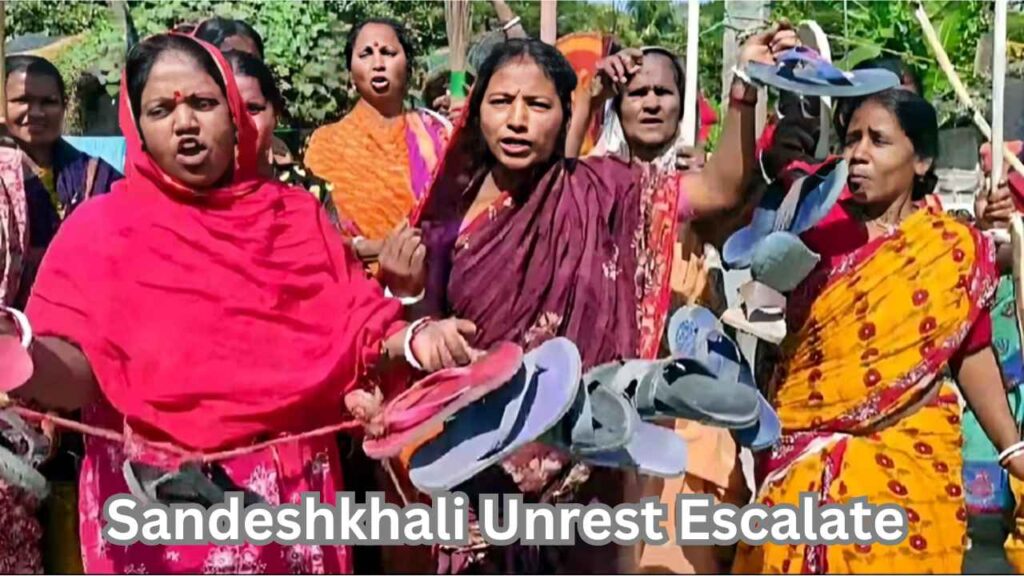
In the small but significant town of Sandeshkhali, located in West Bengal, India, a wave of unrest has recently captured national attention. This article delves into the root causes of the protests, the subsequent events, and the responses from authorities and local leaders.
Table of Contents
Background of Sandeshkhali’s Unrest
In the peaceful town of Sandeshkhali, known for its beautiful scenery and rich culture, there has been a lot of trouble lately. It all started with some serious accusations against a leader from the Trinamool Congress (TMC), named Sheikh Shahjahan. People are accusing him of sexually harassing women and being violent. This has made a lot of folks, especially women, really upset and angry.
The Escalation

The situation escalated when women, armed with sticks and brooms, took to the streets. Their demand was clear and firm, the arrest of Sheikh Shahjahan and his close aides. Amidst these protests, another TMC leader, Ajit Maiti, became a target. He was reportedly attacked by the villagers with brooms and slippers, an incident that symbolized the heightening tensions and the community’s desperation for justice. The accusations against Maiti and his supporters of mistreating local women further fueled the anger.
Government and Police Reaction
In response to the growing tension, the government and local police took significant measures. They imposed Section 144, a law that prohibits the gathering of more than four people in an area, in the most affected parts of Sandeshkhali. This move was aimed at preventing violence and maintaining order, but it also highlighted the severity of the situation.
The Human Aspect: Voices from Sandeshkhali
The heart of this unrest is the people of Sandeshkhali. Their voices, filled with a mix of anger, fear and hope, tell a story of a community standing up against injustice. For many, the daily life has been disrupted, with a palpable tension hanging over the town. “We want justice and peace,” says a local resident, reflecting the sentiment of many. Their struggle is not just about one incident or individual but a broader fight for respect and safety in their community.
Conclusion
The unrest in Sandeshkhali is more than just a local issue, it’s a reflection of a community’s fight against injustice. As the situation continues to develop, the hope for a peaceful and just resolution remains strong. The people of Sandeshkhali have shown that even in small towns, voices raised together can echo loudly, demanding change and accountability.
